Aztec Farming: How to Feed a City in a Swamp
The Aztecs are famous for pyramids and human sacrifice... but how did they eat? They built a massive city in a swamp and fed millions of people. This wasn't magic, it was some seriously clever Aztec farming. Learn more about the broader systems behind it in Aztec Agriculture .
Building a City on a Swamp
The Aztecs built their capital, Tenochtitlan, on a small island in Lake Texcoco around 1325. It was a tough spot, salty and prone to flooding. Nobody else wanted it.
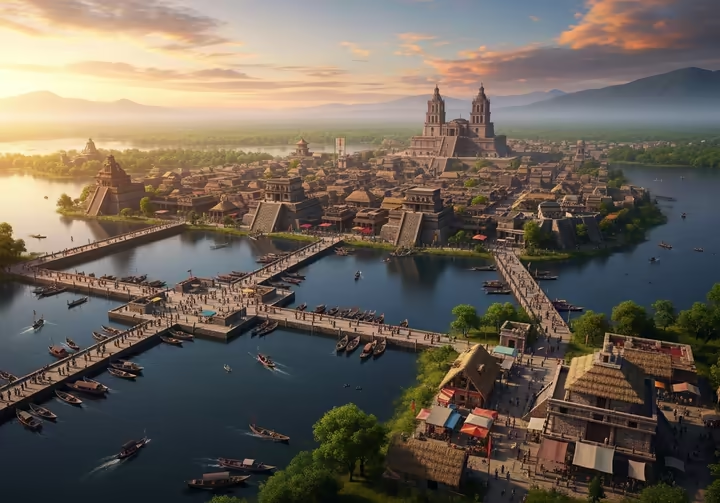
But this tricky location forced them to get creative. Their farms both grew food and created new land for the city to expand on. They turned an unwanted marsh into a fortress and a farm, all in one.
Chinampas: The 'Floating Gardens'
The secret to their success was the chinampa . People call them "floating gardens," but they didn't actually float. They were man-made islands built right in the shallow parts of the lake.
How to Build a Chinampa
Making a chinampa was hard work. Workers used canoes to mark a rectangle in the lake with stakes, then built a woven reed wall around it.
They filled this enclosure with layers of mud dredged from the lake bottom and rotting plants. They piled it on until the new island rose about a meter above the water level.
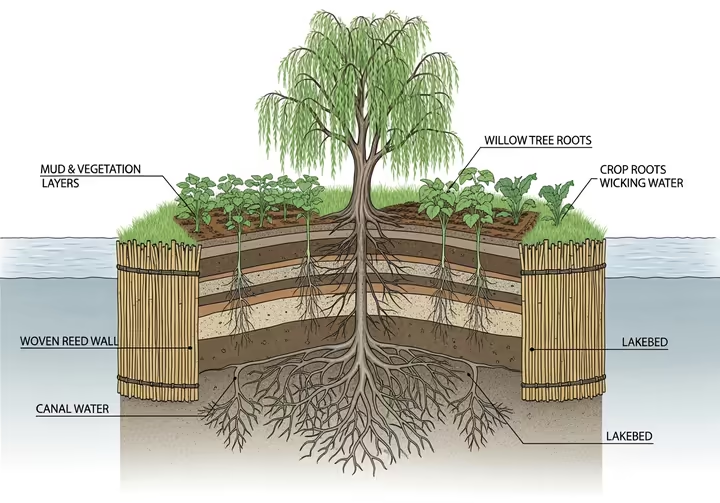
Finally, they planted willow trees ( āhuexōtl ) around the edges. The roots grew deep, anchoring the whole structure to the lakebed so it wouldn't wash away. The trees also provided shade and blocked the wind.
A Super-Productive System
These gardens were incredibly fertile. Water from the canals soaked into the soil from below, so the plants' roots always had moisture, even in a drought.

The canal bottoms were full of nutrient-rich muck. Farmers would scoop this gunk out and spread it on top of the chinampas as a natural fertilizer. This system was so good they could get up to seven harvests a year.
Farming Beyond the Lake
The chinampas were amazing, but they were just one part of the plan. The Aztec empire covered lots of different terrain, so they had other farming tricks up their sleeves.
Terrace Farming
In hilly areas, farmers built terraces called tēpantli . They cut steps into the hillsides and built stone walls to hold them in place. This let them farm on steep slopes that would otherwise be useless. The terraces also prevented rain from washing away precious topsoil.

The Three Sisters
On the mainland, the Aztecs used the milpa system, a clever combination of three plants known as the "Three Sisters". These were maize, beans, and squash, and they were planted together because they helped each other grow.

The tall corn stalks acted as a pole for the bean vines to climb. The beans put nitrogen into the soil, which corn needs a lot of. The big squash leaves spread out on the ground, keeping the soil moist and stopping weeds.
The Aztec Farmer's Toolkit
Aztec farmers didn't have plows or animals like oxen. They relied on simple, effective hand tools and a deep knowledge of the land.
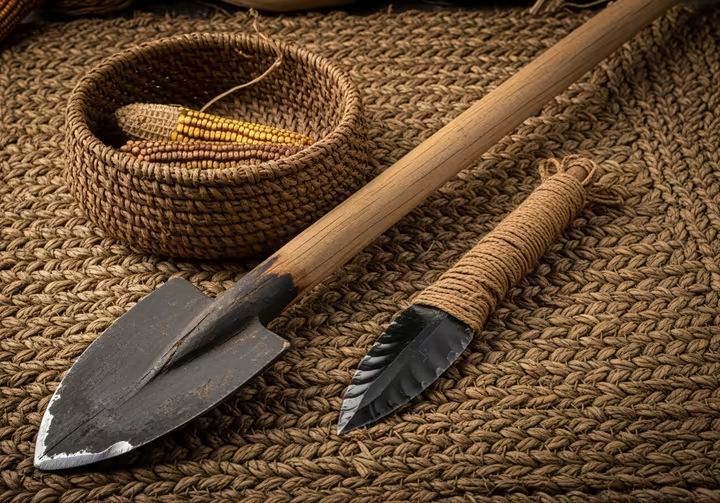
Their main tool was the uictli , a wooden digging stick hardened by fire. It had a flat, spade-like end perfect for the soft soil of the chinampas. They also used stone axes to clear land and sharp obsidian blades for harvesting.
What They Grew
Aztec farms produced a huge variety of crops. These plants were the center of their diet, economy, and even their religion.
Maize: The Main Crop
Maize ( cintli ) was everything. It came in many colors, like yellow, red, and blue, and was eaten at every meal.
But they had a secret process called nixtamalization. Soaking dried corn in a solution with lime or wood ash released key nutrients. This trick allowed them to feed a huge population on corn without anyone getting sick from malnutrition.
Staples and Spices
Along with maize, the other two "sisters," beans ( etl ) and squash ( tziyo ), were key. Put them together and you had a perfect meal with carbs, protein, and vitamins.
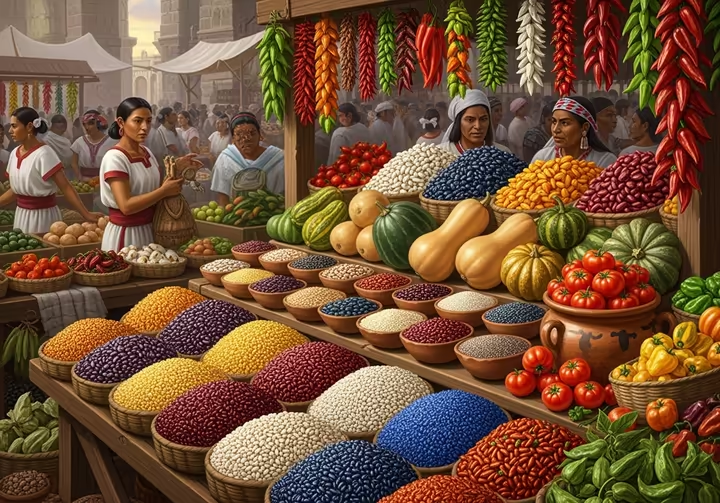
Other important crops included protein-rich amaranth and chia. And, of course, they grew tomatoes ( xītomatl ) and a huge variety of chiles ( chīlli ) to spice things up.
Luxury Foods
Some crops were just for the rich. Cacao beans couldn't be grown nearby, so they were imported and very expensive. In fact, they were sometimes used as money, an important part of the wider Aztec economy built on tribute and trade.
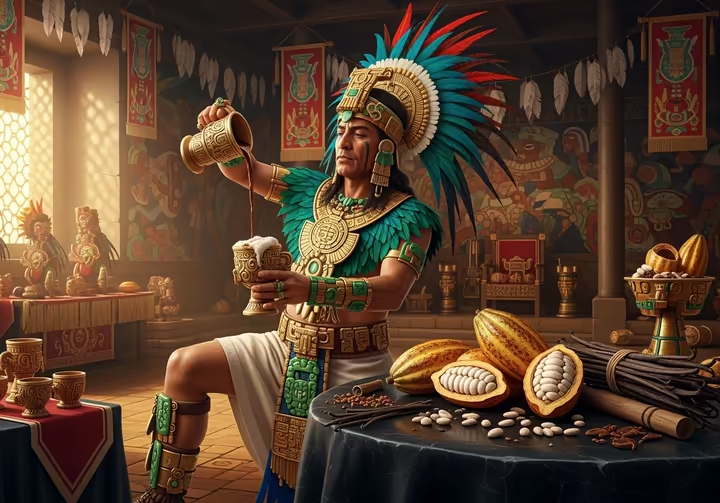
Drinking chocolate, or xocolatl , was a drink for rulers, nobles, and top warriors. They drank it cold, frothy, and often spiced with vanilla or chile.
Masters of Water Control
Aztec farming worked because they were masters of water engineering. They built canals, dikes, and aqueducts to manage the water in the Valley of Mexico. A huge network of canals served as liquid highways for canoes, which moved tons of food from the farms to the city market.
Their biggest project was the Nezahualcoyotl dike, a 16-kilometer wall across the lake. This protected the city from floods and kept the salty water away from their freshwater farms. To get drinking water, they built aqueducts that had two channels, so if one needed cleaning, they could just switch to the other without cutting off the city's water.
So, What Happened?
Aztec farming was about redesigning an entire landscape. This system fed one of the world's biggest cities in a place that should have been uninhabitable.
When the Spanish arrived, they didn't understand it. They saw the lake as a problem and spent centuries trying to drain it. By destroying the dikes, the Spanish actually caused the very floods the Aztecs had prevented.
Today, the few remaining chinampas are a reminder of a smarter way of living. They show that the best engineering often works with nature, not against it.